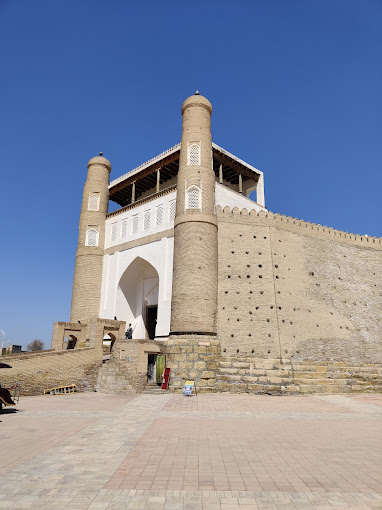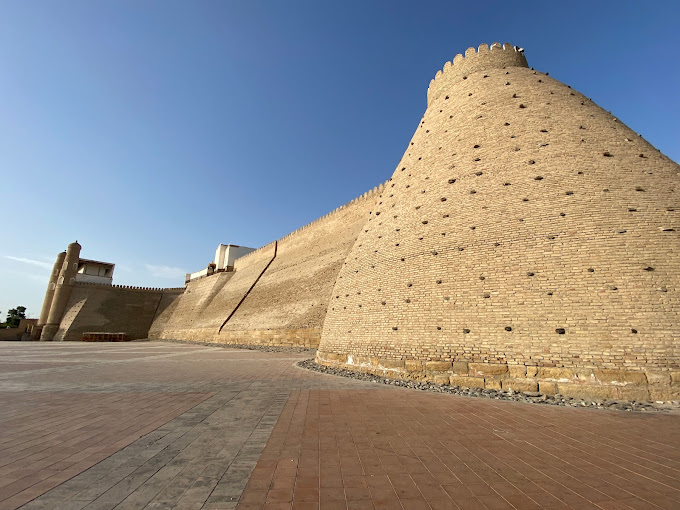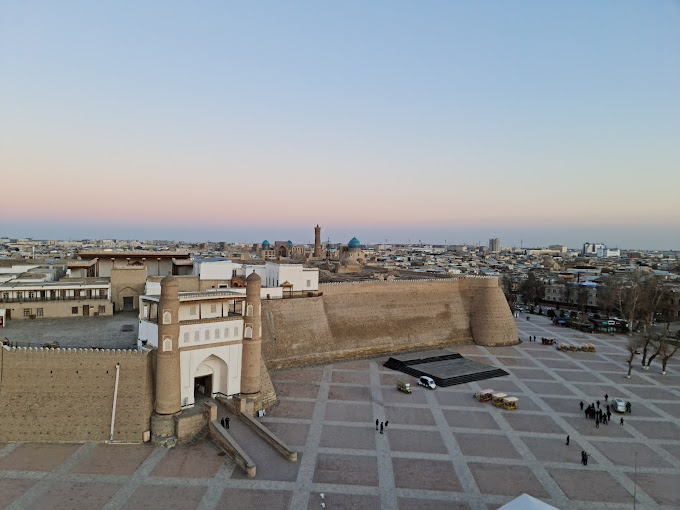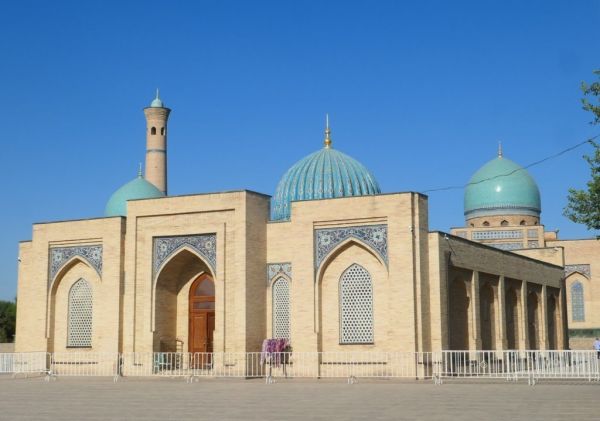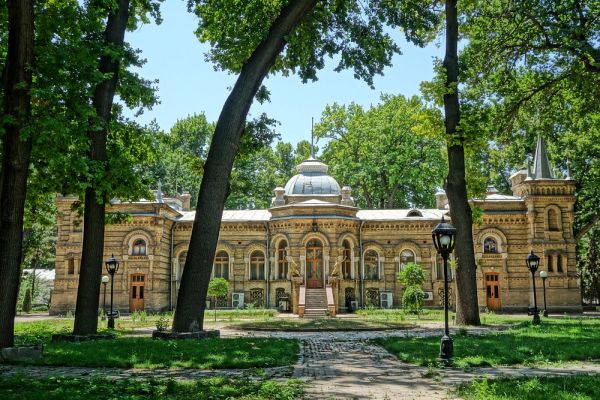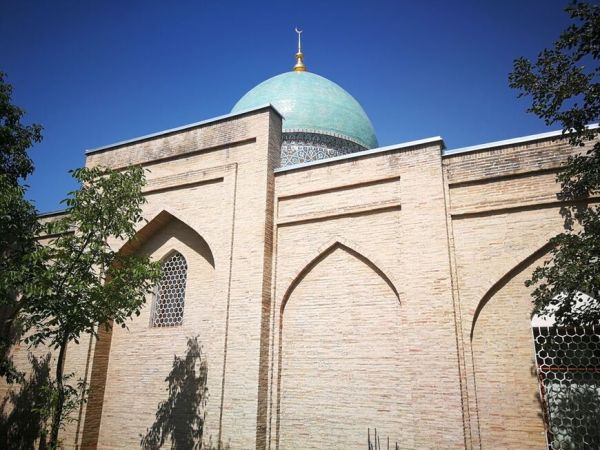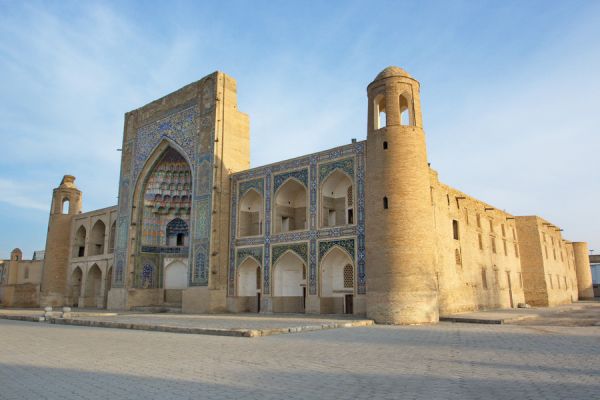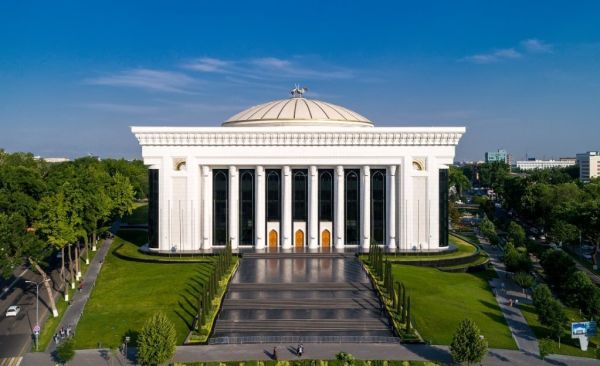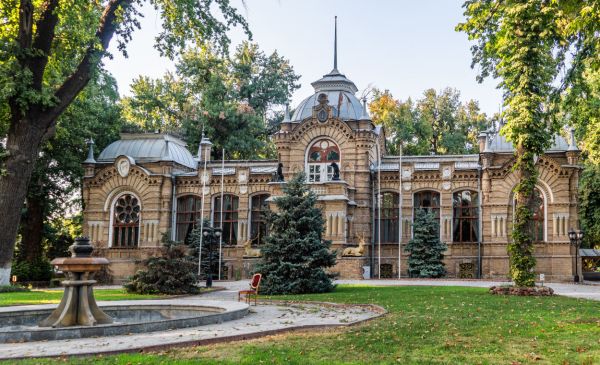Ark Fortress in Bukhara
The Ark Fortress in Bukhara is one of the oldest buildings in the city. According to the research of archaeologists, the first foundation on the site of the modern fortress was laid back in the IV–III centuries BC. For more than 2,000 years of its existence, the fortress has been repeatedly razed to the ground and rebuilt. Until the beginning of the 20th century, the fortress of Bukhara was the residence of local rulers.
Ark Fortress is located on an elevated part of the city of Bukhara — the highest sections of the hill reach a height of 20 meters. The total area of the historical and architectural object is 4.2 hectares.
The fortress is famous not only for its monumental appearance, but also for the fact that great writers and scientists lived and worked within its walls at various times: Omar Khayyam, Avicenna, Firdowsi. According to Avicenna's notes, it can be concluded that in the Middle Ages there was an extensive library with unique books, which, unfortunately, have not survived to this day.
History
The history of the fortress is shrouded in legends. Its construction is attributed to Siyavush. It is said that he was once the son of a ruler, but his stepmother did not love him and plotted all sorts of intrigues, thanks to which Siyavush was sent into exile. One day, while taking a walk through the bazaar, he noticed an extraordinarily beautiful girl and immediately fell in love with her. Siyavush decided to marry the girl, but she turned out to be the daughter of the ruler of Afrosiab, who opposed an unequal marriage from his point of view. In order to marry a beautiful princess, Siyavush had to build a magnificent palace at the behest of Afrosiab. But the task was not an easy one, because there was a condition: the palace should be built on the skin of one bull. The inquisitive mind of the young man suggested how to carry out the ruler's order: he cut the bull hide into thin strips, then tied them together and laid them out in a line, inside which he erected a magnificent structure.
The plans of the first architects included the construction of a polygonal fortress. During construction, the walls repeatedly collapsed — the hill embankment could not withstand their weight. In the 7th century, under the rule of Bukhar-khudat Bidun, the architects finally found a solution - 7 ladle—shaped pillars were laid in the foundation (the prototype of the fortress' shape was the constellation Ursa Major).
In the 9th and 10th centuries, the fortress was significantly rebuilt: the thickness of the walls was increased, and several observation towers were added to the structure.
The arch was rebuilt already in the 16th century, during the reign of the Sheibanid dynasty. The aim of the restorers was to restore the original appearance of the building, and they successfully succeeded. But there were some innovations. The arch was completed with a new gate on the east side, named Gurian, and another gate on the west side, named Registan. Unfortunately, the Gurian was destroyed shortly after its construction, but the western gate has survived and has survived to this day. They are known to everyone who has ever been lucky enough to enter Bukhara. There is also a historical fact that Genghis Khan came to the city in the 13th century. The townspeople fled to the secure fortress walls of the Arch. They managed to hold off the onslaught of the enemy for a long time, but still Genghis Khan's troops won — the fortress fell, it was destroyed and looted.
The buildings located in the fortress perimeter, which can be admired today, were erected, for the most part, during the reign of two noble families — the Ashtarkhanids and the Mangits. During the era of the first, they built a chic Kurinish hoka, a kind of throne room, as well as a Jami mosque. Under the rulers of the second dynasty, the Prime Minister's courtyard (Kushbegi bolo) was rebuilt, as well as a couple more courtyards for greetings (Salom khona) and for keeping horses (Sais khona).
At the beginning of the 20th century, the fortress had a very majestic appearance. It could be called, without exaggeration, a city within a city. The fortress walls housed the ruler's palace and many rich official houses. The fortress perimeter could accommodate about 3,000 people.
But, unfortunately, in 1920 the Arch was destroyed again. In order to overthrow the Bukhara ruler Seyid Alim Khan, Frunze's troops stormed the Ark. The ancient walls were attacked by aircraft. The eastern section of the fortress was particularly badly damaged. Today, the famous Museum of archeology is open on this territory. Tourists and residents of the city are also attracted here by the Childukhtaron Mosque and Honako Battol Gozi.
